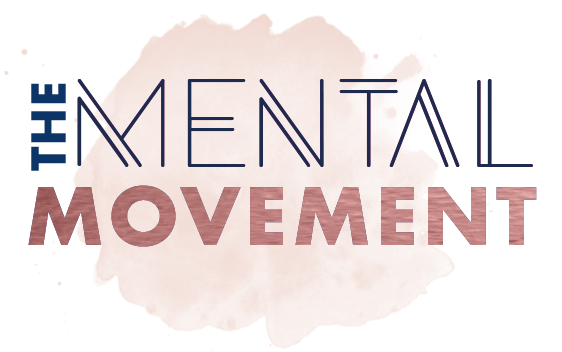Those of a certain age may well remember the Persil advert below from 1996 which taught us the power of PMA or Positive Mental Attitude. As well as the importance of not putting your sandwiches in with your sports kit.
I vaguely remember some mockery of the PMA message. I’d imagine partly due to the over-zealous father’s approach to his son’s performance in the sack race on sports day. But also, perhaps because us Brits find the concept of ‘positivity’ tricky to stomach and I’m not sure we always view it as a desirable approach to life.
To assume something’s going to go well? Naive at best. Fanciful lunacy at worst.
As part of this month’s theme on ‘Starting something new’, I’ve already talked about focusing on the small steps that get you moving but there’s also no doubt in my mind that the attitude that you’re able to adopt through the change process is critical to where you’ll end up.
In this post, I’m going to explore what PMA can mean, the ways in which we can bring a bit of PMA into our lives and some of pitfalls to look out for along the way.
Meaning?
The concept of PMA was first introduced, way before the Persil ad, in 1937 by Napoleon Hill in the book Think and Grow Rich, in which he proposed positive thinking as a key driver of success.
This view was then expanded to suggest that having an ‘optimistic disposition in every situation in one’s life attracts positive changes and increases achievement’.
The definition goes on to describe a state of being defiant in the face of adversity, set back or negativity. To be a ‘winner’ regardless of the circumstances.
Even for me (known for occasionally preferring a somewhat ‘black or white’ approach to life), I find this idea a little too rigid and understandably off-putting for your slightly cynical average Brit, who’d feel much more comfortable preparing for the worst and being pleasantly surprised with the best (in the unlikely event it were to happen).
However, I strongly believe that aspects of PMA hold true and when used in a smart and proactive way, as opposed to any form of ‘blind faith’, can be an integral part of a successful change process and perhaps make the difference between reaching a desired end state or giving up part way through.
My view of PMA is quite strongly linked to some of the foundations of good coaching conversations – forward looking, solution focused, action based and the openness to fully explore all options and opportunities.
‘Stuckness’, implying a lack of ability to change, often occurs as a result of a strong pull towards the past, too much attention being placed on the barriers/blockers/risks and a narrow viewpoint which doesn’t give space for new options.
This must be NMA, negative mental attitude, and surely inhibits change, slows the process and limits the scope of potential results.
PMA fits under the umbrella of positive psychology, focusing on how people can find fulfilment and contentment, as opposed to conventional psychology which aims to understand the causes of and treat the negative effects of mental illness.
‘Self-efficacy’ is one area of positive psychology and is described as belief in your own ability to succeed. Again, this is absolutely not about blind faith, but more about having the confidence that you’ll find a way to get through a period of change and an openness to be flexible along the way.
It doesn’t matter what you call it or how you define it, used wisely, aspects of PMA are an important tool for change and here are some ways you can make them work for you….
How?
- Often our plans for change are usurped by events or the actions of others which are out of our control – this can feel pretty demotivating. However, it’s useful to remember that only you have control over your reaction to these events – whether you get angry, upset, depressed (and for how long you feel like this) or whether you’re able to take stock, reframe, work out what is in your control, learn from that experience, flex your plans if needed and get back on it. You get to choose the lens through which you view your situation.
- Emotional intelligence – if you have a good understanding of yourself, then you’re more likely to make choices by tuning into your personal values/priorities, as opposed to basing them on convention or expectation. This will, not only, increase your chances of ‘success’ but also increase the likelihood that when you get there you’ll find contentment.
- Come off auto-pilot. Because it saves us valuable time and energy, we spend a lot of our time doing things automatically, doing what we’ve always done or doing what we’ve been told to do. However, it’s important to recognise the moments and opportunities where we need to make a conscious choice. Where we don’t want a decision to be made by someone else without our influence or where the outcome is sufficiently important to us that we’d rather be in control in order to maximise the chance of success.
- Resilience, flexibility and an ability to roll with the punches are pretty critical aspects of PMA. If you’re going to sweat every bit of small stuff that comes your way then the journey is going to be slow, hard and draining.
- Pluck up some courage to find your version of self-efficacy,the belief that you’ll succeed. Don’t be afraid of yourself, your own brilliance, your fear, your confusion, your doubts or of what might be possible. Find a way to embrace and harness all that, it’s there to teach you something.
- I’ve left my own nemesis until last. Patience. Any change that is both worthwhile and sustainable isn’t likely to happen overnight or without some hard graft. If you’ve made your choices based on your values and priorities then it’s worth going for, even if it takes a while, and it’s worth getting it right/doing it well.
Pitfalls
There are a couple of things to look out for when you’re trying to develop some PMA:
- Denial – although we don’t want to get consumed by them, concerns and doubts come up for a reason and are there to warn us of risks which need to be considered and perhaps addressed before proceeding further. The short cut would be to ignore or avoid these red flags, to not let them get in the way of our quest for unblemished positivity – this would be a mistake. Instead, give them some of your attention, evaluate them and build them into your plans where necessary.
- Sometimes our desire to succeed is so strong that we can’t even contemplate an unsuccessful, undesirable or unplanned outcome and hence can’t condone any emotion that isn’t positive or aligned with success. Working hard to manage and overcome continuous setbacks and complications can also be extremely stressful. The monitoring and awareness of negative emotions and stress levels during periods of change is just as important to the success of the project as the more direct steps you’ll take towards the result. Identify your best coping and support mechanisms before it becomes an issue.
Conclusion
Regardless of whether you hold Mr Christie in high esteem, there’s something to be said for the concept of ‘thinking like Linford’.
That doesn’t mean becoming an unconscious perma-smiled ‘have a nice day’ evangelist.
It may actually take a while to find a way of authentically expressing your PMA on the outside, but it’s definitely worth finding your own way of summoning up a bit of PMA on the inside.
Just don’t forget your lunchbox (sorry, couldn’t resist that one).


